Our Verdict
This flight stick setup is a luxury object of flight-sim desire, and the weighty action delivered by the AVA base is a delight to use. It's properly expensive though, especially without a dedicated throttle control.
For
- Fabulously weighty action
- Solid, all-metal design
- Excellent switchgear
- Ultra stable
Against
- Expensive
- Lack of dedicated throttle controls
- Base feet can slip
PC Gamer's got your back
For many moons now, the Thrustmaster HOTAS Warthog has sat at the top of our best joysticks guide, staring down threateningly at the plastic-based options below. It's quite possibly one of the most substantial bits of hardware we've ever tested when it comes to build quality and delivers a substantial dose of realism—for a slightly eye-watering $550.
Thrustmaster has been beavering away on a new flight stick base design, however, and it calls it the AVA. That stands for Advanced Versatile Aviation, and it's essentially a modular base for Thrustmaster's future flight sticks. You can buy it as a separate unit, or you can choose to buy it as part of the AVA FA18 Super Hornet flight stick bundle, as I have in front of me here.
That gets you the fancy new AVA base, a 1:1 scale replica of the grip and stick controls from the McDonnell Douglas F/A-18C Hornet, an offset adapter, and a large baseplate to hold it stable on your desk. All told, the whole package will cost you $600/£500, which is no small amount of change—particularly when you factor in that it doesn't come with a dedicated throttle control, like the HOTAS Warthog.
Still, we'll get to that in a moment. What you'll notice most when pulling all of these components from their respective boxes is the sheer heft. The AVA base itself appears to have the density of a small star and feels something like holding a small, angular bowling ball. Looking at the engineering going on inside though, it's really no surprise. Everything about it seems immensely overbuilt both inside and out, which is a very promising start.
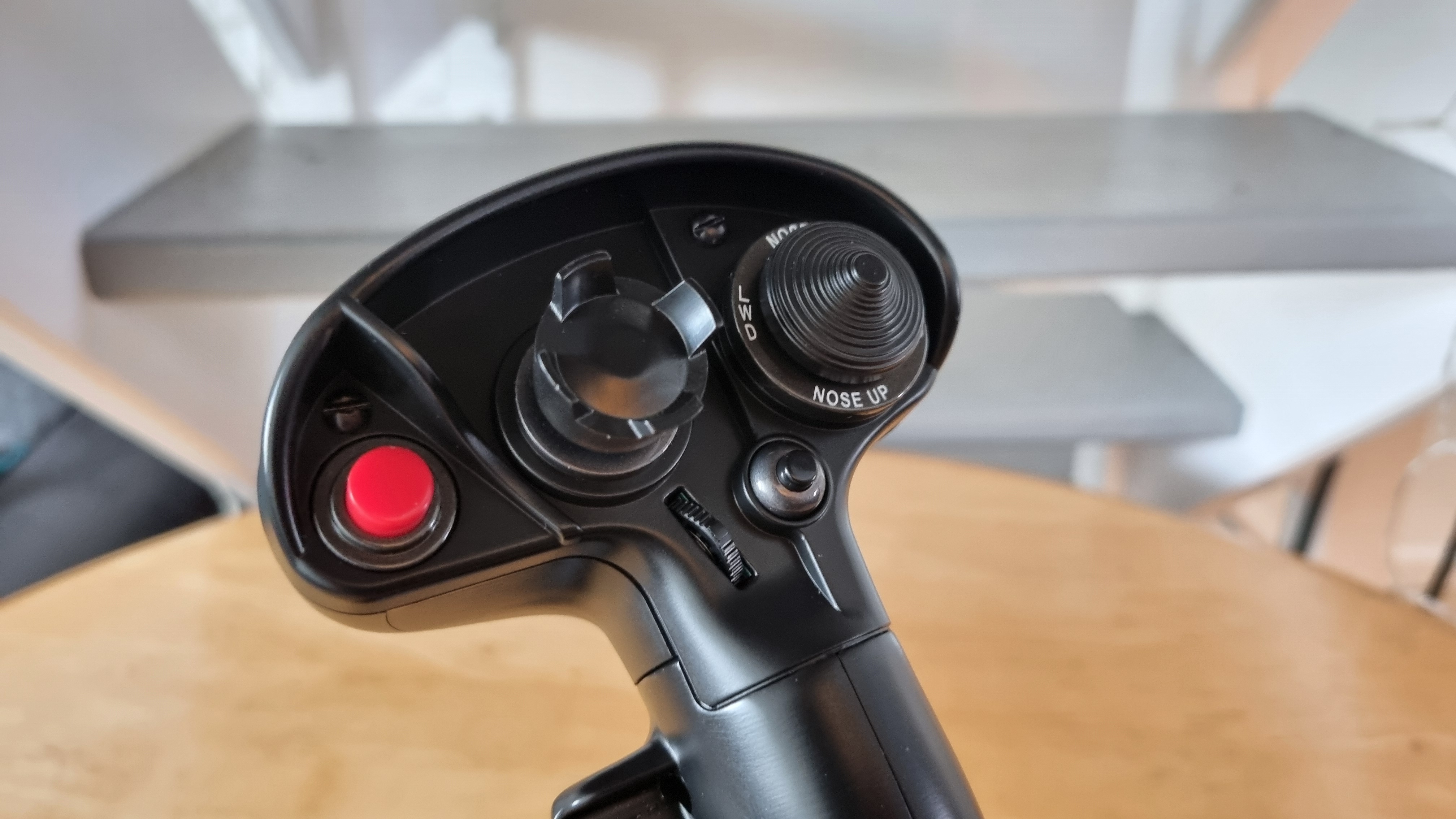
Type: Flight stick
Connectivity: USB Type-C to USB Type-A (cable included)
Controls: 1x eight-way POV hat, 2x four-way hats with push button, 1x metal two-step trigger, 4x push buttons, 1x two-way push button
Extra features: Adjustable base, included tools, spare springs for tension adjustment and cams for axis adjustment, base plate
Price: $600/£500
Then there's the baseplate. It looks a bit like an oversized mouse mat, until you try and pick it up and realise that it could also be used as bullet-proof armour. Thankfully, mounting the two together is merely a matter of adding four included screws, although given the weight of both components, it's still a bit of a fiddle.
Still, given the complexity of some of the other flight stick assemblies I've built recently, it's sweet relief. The stick itself plugs into the top of the base, before securing itself with a twisting ring-lock mechanism. It's all very well-manufactured and plainly obvious to figure out, which immediately adds points in my book. Flight sticks are usually fiddly to construct. This one? A breeze.
Similarly breezy are the connection options, which are: one USB Type-C port and…nope, that's it. Despite being a bundle package here, you'll be up and running in five minutes, including unboxing. There's an included (rather short) USB Type-C to Type-A cable, spare springs of various strengths for the internals of the base mechanism, a set of internal replaceable cams to adjust the axis curve, and two hex keys. These allow you to adjust the internal spring tension of the X and Y axis by poking them into two discrete holes on top of the base unit, which is an immensely satisfying thing to do.
Did I mention just how beautifully mechanical all this is? I'm a sucker for a gorgeous mechanism, and this package delivers in spades. It really does feel like boutique, high-tolerance engineering at its finest, and that's before you start swinging the stick around itself.
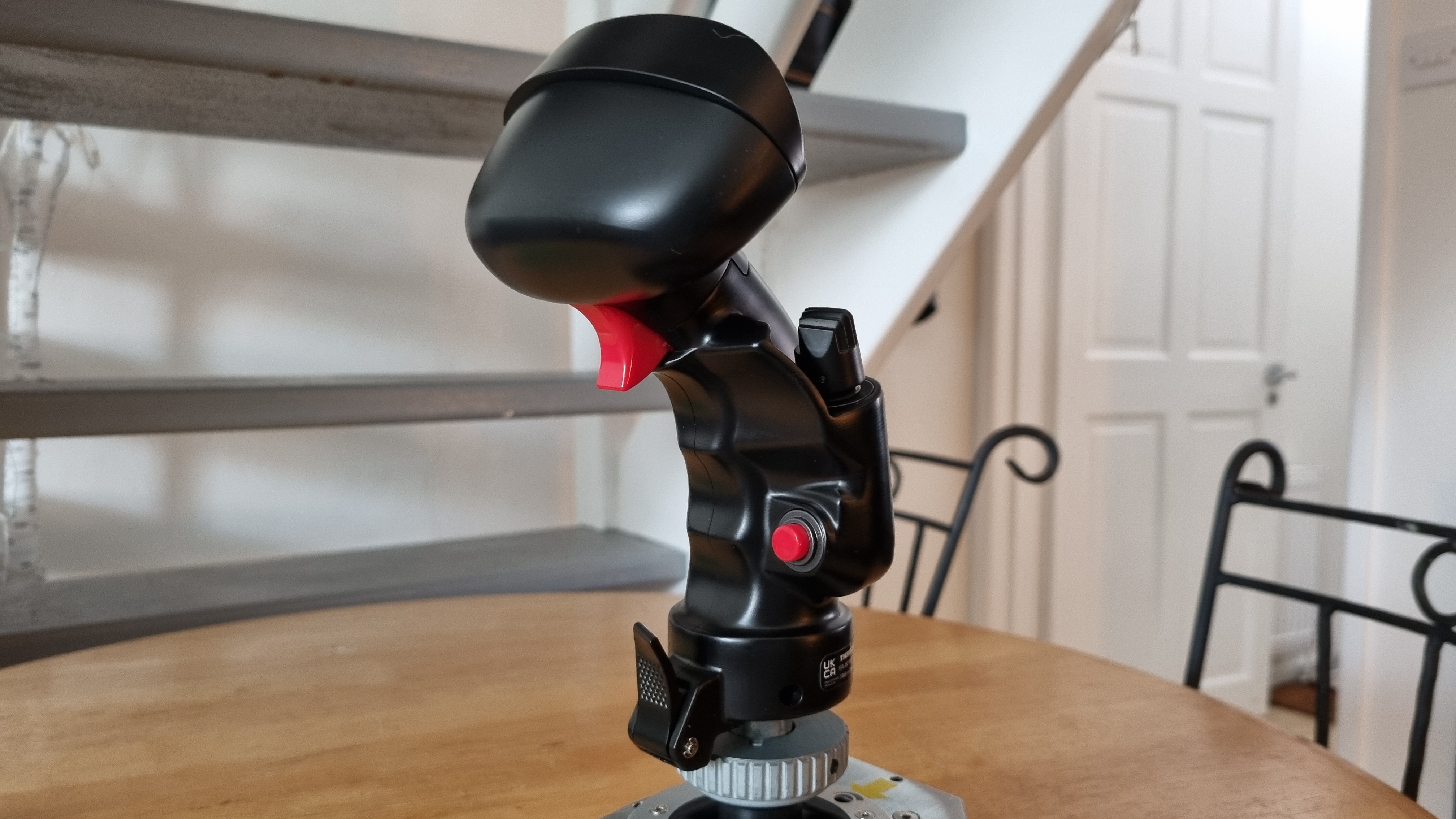
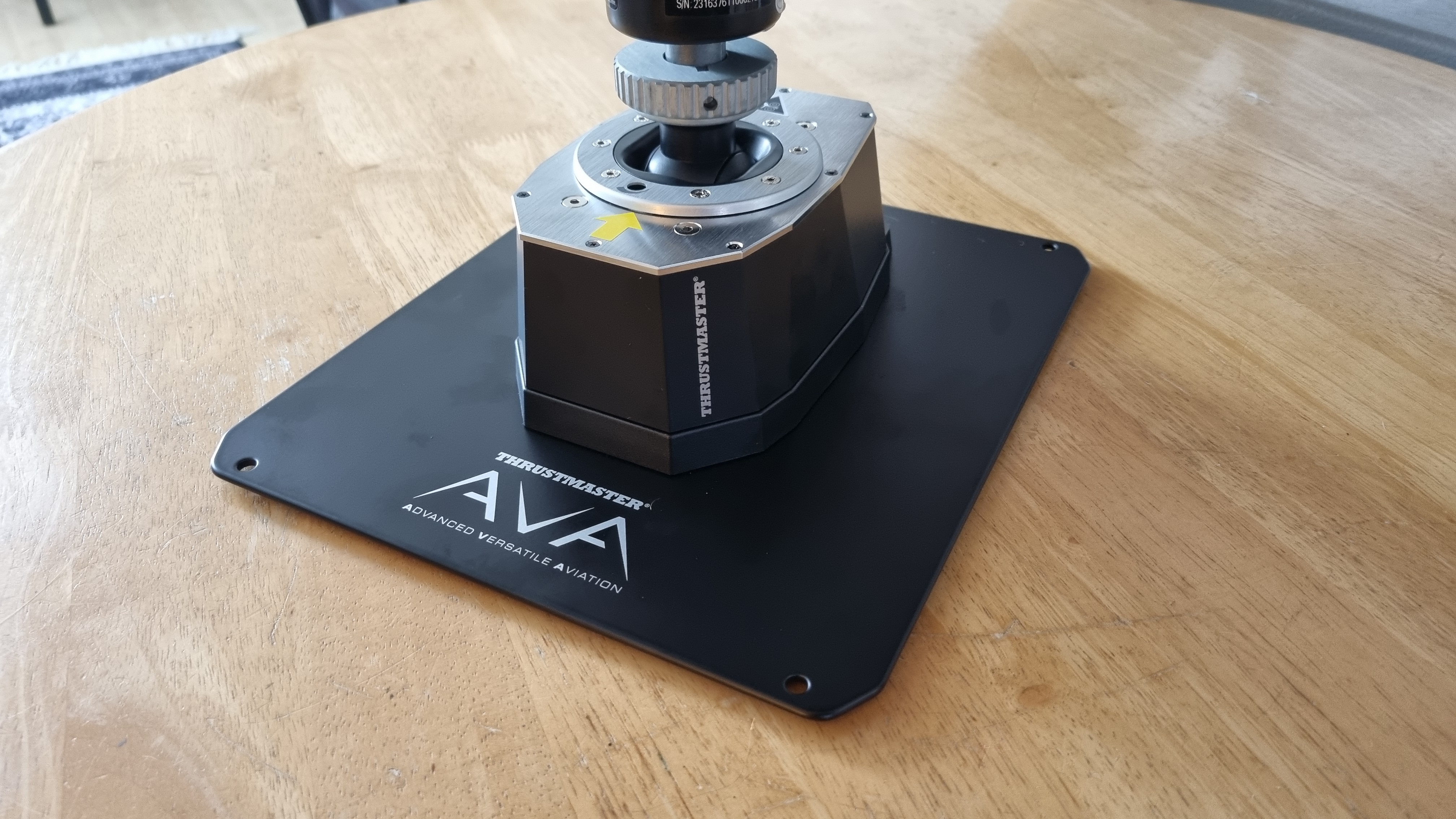
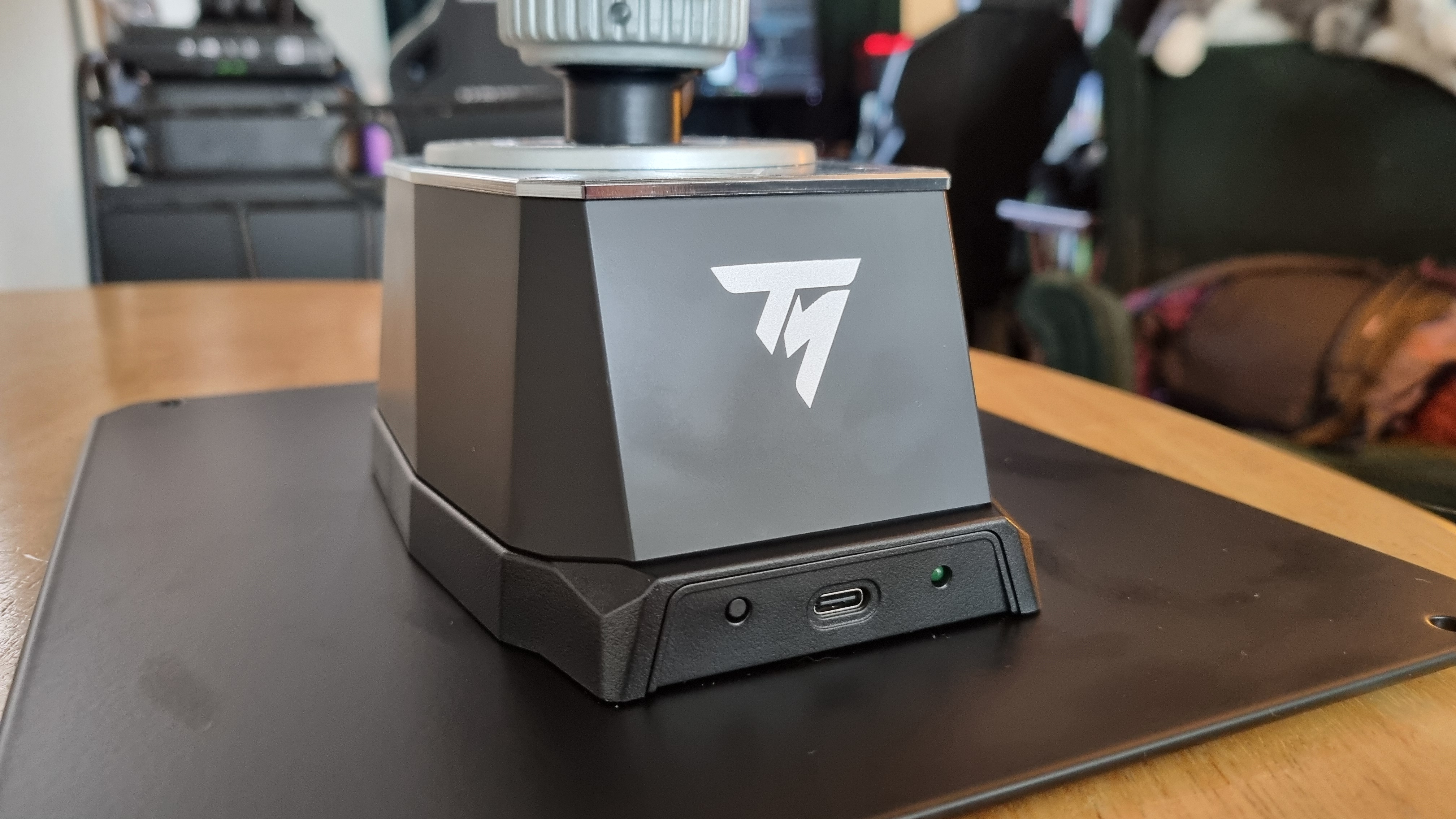
Again, the word I want to use here is weighty. At default tension, you can absolutely see why Thrustmaster ships this bundle with the baseplate included, as given the resistance here, you'd tip it over immediately if it wasn't anchored down to something substantial. There's a glorious, dampened, wrist-pleasing heaviness to the action that immediately puts a grin on my face. A fabulous-feeling thing.
The stick itself is, how shall I put this…somewhat suggestive-looking, in the flesh. I've never had the pleasure (or terror, depending on how you look at it) of sitting in an F/A-18 Super Hornet, so I can't tell you for sure if it's 100% accurate. It certainly looks and feels the part, however, and if you'd told me it had been pulled straight from the spare parts bin at the actual aircraft factory, I'd have believed you.
You get 19 buttons in total to play with. That includes one eight-way POV hat, two four-way hats with push button functionality, a metal two-step trigger, two regular push buttons, two "pinkie push" buttons, and an extra two-way push button for good measure. Plenty, I'd argue, without swamping the average user with a load of controls to accidentally knock and press at the worst possible moment.
This particular grip is designed to natively integrate with DCS: F/A-18C Hornet, but I didn't feel like spending $80 on a pretend plane, so I tested it primarily with bog-standard DCS World instead. Connection is a simple matter of plugging in the cable, downloading the drivers and Thrustmaster's Target software from the website, and auto-detecting the stick.

All flight stick control software feels, at best, antiquated. Thrustmaster's is no exception, but at the very least it seemed to figure out most of the configuration by itself with some poking and prodding. There are all sorts of tweakery and configuration options to be done here, but leaving it on the default program and jumping into a game, I was pleasantly surprised.
It's always a bit of a faff setting up flight sim controls, but the Thrustmaster AVA F/A-18 kit has to rank as the most painless I've configured yet. DCS World had no problems recognising it, and mapping buttons was as simple as finding the appropriate control option and linking it to the button most suited.
By default it'd figured out that one of the hats was best for cockpit view control, the axis movement was properly configured—and aside from finding an appropriate control to sacrifice for throttle movements—it couldn't have gone much more smoothly.
If it was $500, I'd be singing its praises from the rooftops...but $600 feels like it's entered an entirely new price bracket
On that note: for $600, I'd really like a dedicated throttle unit, rather than paying extra for a standalone. That being said, there are plenty of options available here that make sense as throttle controls, and mapping everything to an intuitive one-hand setup was very simple. Still, I like me a good throttle action, and for this sort of cash, I reckon integrating a basic one in the base would be a smart move.
So, what's it like to fly? In a word? Bloomin' lovely. Ok, that's two words, but I have to say that the sensation here is absolutely delightful. It's the weight of the action and the stick itself that really contributes to the feel here, but I have to say this stick and base combo feels easier to fly than other, snappier sticks I've tested.
Perhaps I'm just rubbish at flight games, but having a predictable, heavy action under my wrist means that small movements are easier to predict, and there's an intentionality added by the resistance that means you'll be swooping around the skies like the Red Baron in no time at all.
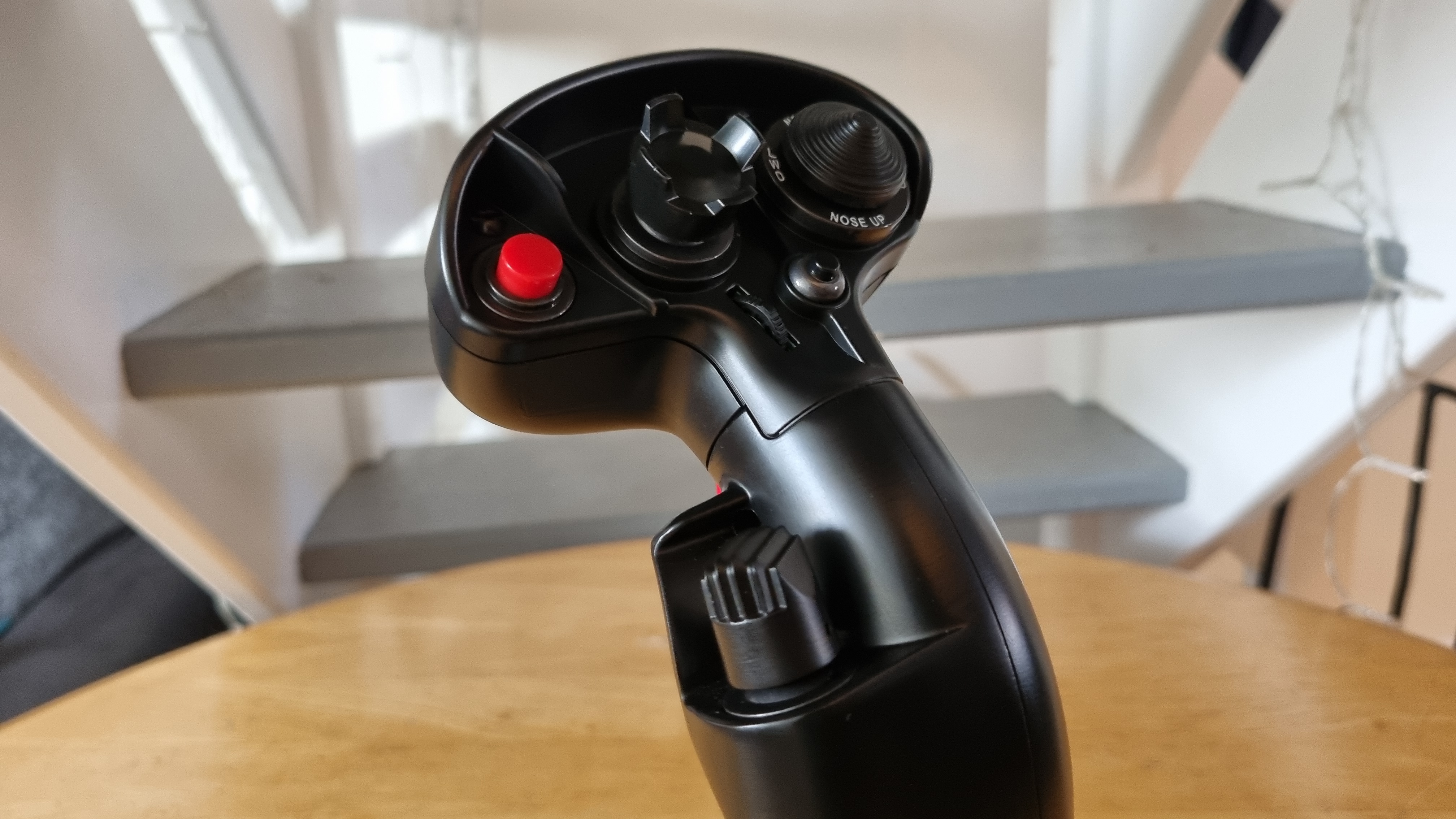
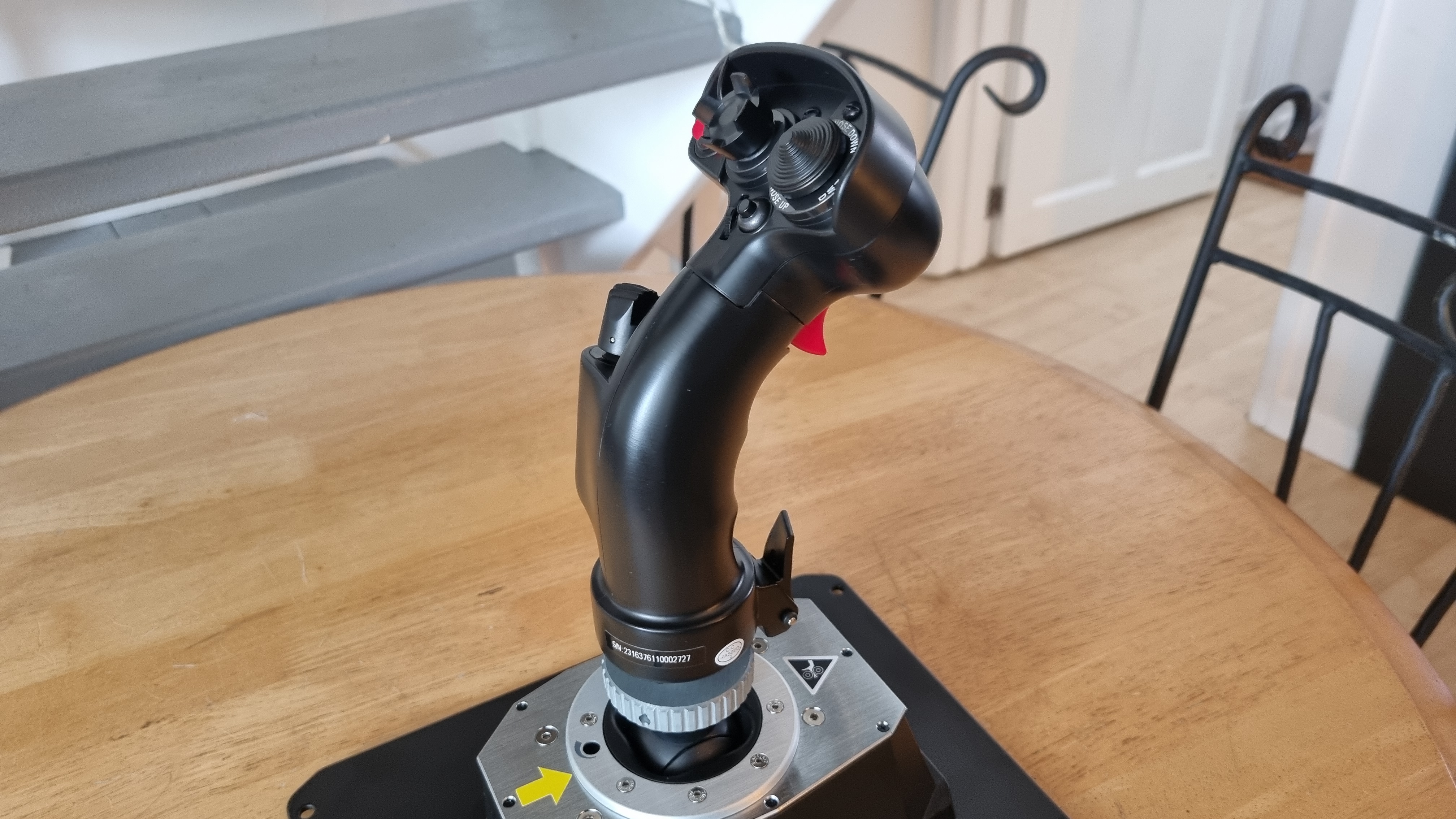
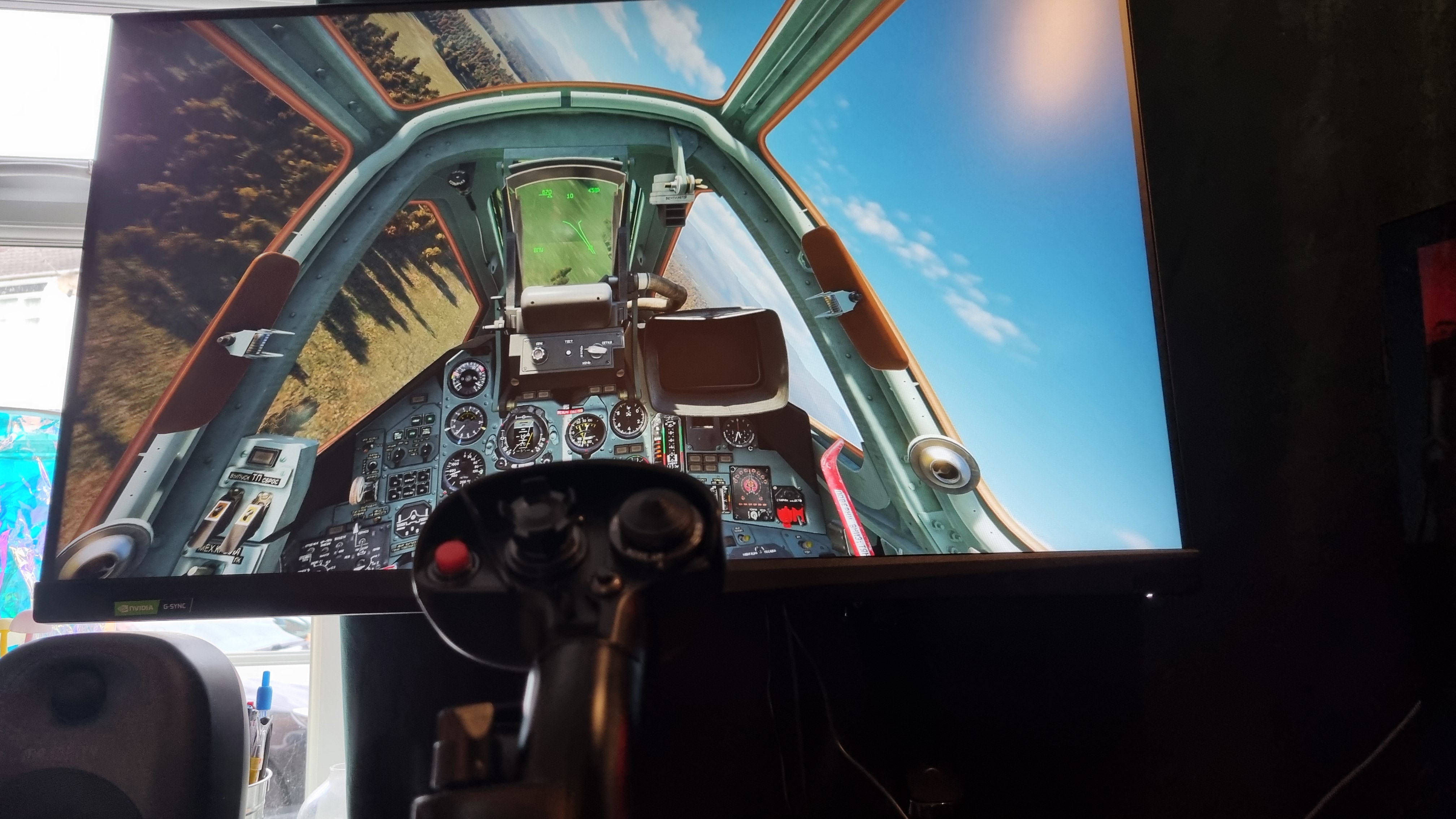
That base plate does an admirable job of keeping things stable as well, although I will say that the feet on the bottom could do with some work. They don't slip easily, but I think I'd like them to be stickier to provide just a touch more slipping resistance. This will vary according to your desk surface of course, but on my varnished wooden table, they did occasionally slip just a touch. Not enough to be continuously annoying, as with other sticks I've used, but it did happen more than once.
Otherwise, though, this setup delivers meaningfully chunky flight stick action in one, well-thought-out and extremely well-built package. More than that, it's about as simple to build and set-up as it could possibly be, and it's a real looker on your desktop as well, even if it is a touch phallic.
It's just that price that gives me pause. See, I've recently tested the VKB Gladiator NXT range of flight peripherals, and there you can get a great flight stick, throttle control, and more buttons and modular options than you can shake a stick at for $450. It's also a great feeling system, with excellent mechanisms and chunky buttons. I'd say that the Thrustmaster AVA F/A-18 Super Hornet system is even better to use, thanks to all the metal involved in its construction, but what you're getting here is a simpler system for quite a bit more cash.
✅ You're looking for luxury: This is a truly premium-feeling object, and looks fantastic from all angles.
✅ You like a weighty action: There's a genuine heft to the stick movement (although you can lighten it up if it's too much) that makes for very accurate inputs.
❌ You're on a budget: As lovely an object as this is, $600 feels like a lot given the options available from the competition.
❌ You want dedicated throttle controls : You can map the available controls here to compensate, but for this sort of cash a proper throttle control feels like a glaring omission.
But depending on your use case, simplicity might be key. If you're a flight sim obsessive, then the VKBs have you covered. It's the ultimate comprehensive system for flight fans. For most people, though? It's far too much of a fiddle.
If you're someone who wants an excellent, easy to set up, super premium flight stick that's just going to get on with its job and deliver giggles for weeks, I have to hand it to the Thrustmaster. And if it was $500, I'd be singing its praises from the rooftops.
But $600 feels like it's entered an entirely new price bracket, especially when you can still pick up its predecessor for $50 less, complete with separate throttle control. That being said, it doesn't have the fantastic AVA base as standard, although you could upgrade it separately—for a seriously substantial $300.
It comes down to this: If you've got the cash to splash and don't care about taking things to the extreme when it comes to options, this is the stick I'd buy. There are many, many cheaper options, but for the feel of flight alone I'd say this was the best I've tested to date. If Thrustmaster knocked $100 off the asking price, I'd say every other flight stick manufacturer on the market should be seriously worried. As it is? It's just a touch too much to truly knock its competitors off their perches.
This flight stick setup is a luxury object of flight-sim desire, and the weighty action delivered by the AVA base is a delight to use. It's properly expensive though, especially without a dedicated throttle control.

Andy built his first gaming PC at the tender age of 12, when IDE cables were a thing and high resolution wasn't—and he hasn't stopped since. Now working as a hardware writer for PC Gamer, Andy's been jumping around the world attending product launches and trade shows, all the while reviewing every bit of PC hardware he can get his hands on. You name it, if it's interesting hardware he'll write words about it, with opinions and everything.


